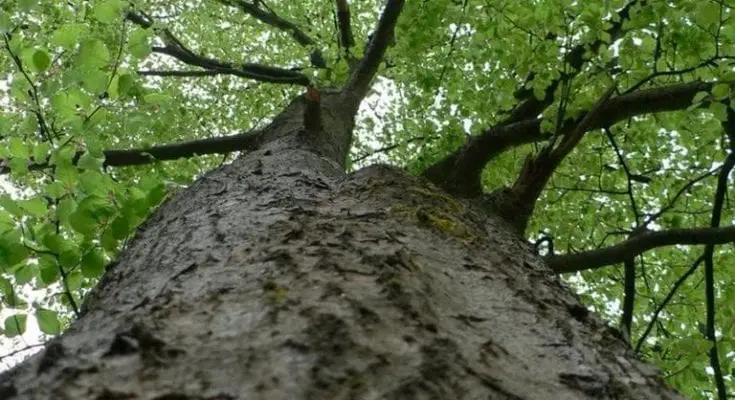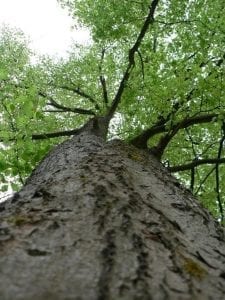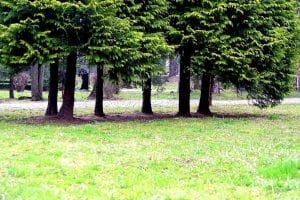5 Interesting Facts About Trees
- Trees are the longest living organisms on Earth. Trees are our true seniors that we must respect and cherish.
- A large tree can consume over 100 gallons of water per day from the ground!
- Trees can communicate and defend themselves. To defend against attacking insects trees release a chemical onto their leaves.
- Trees help keep you cool. By evaporating water in their leaves, trees lower the air temperature. Urban Green is a mechanism and environment that takes advantage of this.
- Antarctica is the only continent where pine trees do not grow.
Pakistan has planted over a billion trees from UpliftingNews
With legalization in Canada, next year I shall grow 4 large trees. from trees
Where is the oldest tree in the world? What about goats that climb trees or the amazing dragon blood trees?
Nature Facts: https://www.interestingfacts.org/category/nature-facts
World Facts: https://www.interestingfacts.org/category/world-facts
Science Facts: https://www.interestingfacts.org/category/science-facts
Definitions: https://www.interestingfacts.org/category/definition
Planets: https://www.interestingfacts.org/category/facts-about-planets
Nutrition Facts: https://www.interestingfacts.org/category/nutrition-facts
Things To Do: https://www.seatsforeveryone.com/blog
Sitemap: https://www.interestingfacts.org/sitemap.xml
How To Plant Trees
When your property falls and rises across a hillside trees can be somewhat tricky. Challenges include water infiltration and root depth that is uneven. By producing a planting shelf as we make sure the proper planting depth and install trees, that helps water flow these problems are overcome. Step 1: Locate the Root Collar – Step one to plantation trees in any position is finding the root collar the area where the root system meets the tree’s trunk. The root collar is visible because a slight curve because the trunk and the roots meet. Lose dirt the root collar when plants are sent.
Until you find the flare expose the root collar. You may need to remove dirt until the root collar is exposed by the top of the root ball. Locating the origin collar is essential to setting the appropriate planting depth of a tree. The.1 reason for tree collapse is planting too deep, that causes roots to search the trunk and limit the flow of nutrients and water. For success trees so the top of the main cage sits above also the remnant of the roots and the ground level sits just below soil. Step 2: Excavate a plantation hole – Trees require wide planting holes to allow plants to establish a strong main system. You must hire certified arborists from Oceanside tree service for the effective care of your trees, lawns and gardens.
As a general guideline, dig the planting hole 3 times the diameter of the main ball. Set the thickness of the planting hole in accordance with the height of the root clod so that the root flare or cage is going to be level with the original ground grade. While excavating the planting hole, heap some of the soil downstream of the hole as you work. Remember to excavate a wide hole, 3 times as wide as the main ball. Step 3. Create a Planting Shelf – Whenever planting on a slope, we risk planting this upward portion of the origins too deep, and exposing the down-hill portion of the root ball.
This problem is easily avoided by producing a little planting shelf, as illustrated below. Step back from this planting hole and visualize a little terrace around the tree. Cut back the slope over the tree to make a flattened area uphill of this planting hole. This may prevent the uphill origins from being buried too deep. Place excess ground downslope of this tree to extend this shelf, that will ensure roots on the down-hill side of the tree remain buried. On very steep slopes it might be necessary to strengthen this shelf with rocks or other hardscape materials. Irrigating trees on a slope can be challenging, because water tends to run rapidly downhill.
Planting Trees
The greenery around us makes a healthful and life lives. Planting trees is essential to keep a balance in the ecosystem. All the beings that are living are determined by trees in some manner or another. Structure, the strength and endurance of trees make them valuable in various manners, for the environment. It’s because trees not just support life. Proceed and improve your knowledge. Environmental advantages Of Planting Trees – Trees function as a habitat, which offers support to a range of fauna and flora. Aside from supplying them they provide the wildlife, looking for shelter from the forests with a sense of privacy and security. They also create amazing aspects of nature such as the oldest tree on earth and shady areas where dogs and people can relax.
Trees remove quantity of air and CO2 pollutants including ozone sulfur dioxide and sulfur dioxide. The biodiversity becomes enriched in turn. By moderating the effects of sunlight, wind, and rain, the climate is controlled by trees. In winters, they behave as windbreaks for your house assisting you to save on heating cost, by providing shade, while they moderate. Trees reduce soil erosion, since they bind the soil through their roots, that would have been washed away in flood and rainstorms. Trees also help improve the fertility of all soil. Rich soil transfers nutrition to food, that contributes to human health. Trees make urban green and improving the ecosystem possible.
The greenery of trees adds colour to the landscape and improves the picturesque beauty of the environment. Based on a latest research study, houses and properties on tree lined streets are found to be attractive places to live from. Aside from this, shrubs and trees planted around homes also supply evaporative cooling benefits. Trees are great absorbers of noise. Noise pollution can be reduced, to a great extent, by planting increasingly more trees. Planting of all trees facilitates better management of all flooding water. Trees also medium flooding hazards, by allowing the rainwater to percolate into the soil, instead of all running over it.
The demand for clean drinking water could be met by planting new trees. Forests and plant cover obviously slows the flow of rainwater, thus filtering it. Once slowed, rainwater seeps down to fill underground storage tanks or aquifers. In addition, they prevent water in mixing with the salt water of all oceans.




